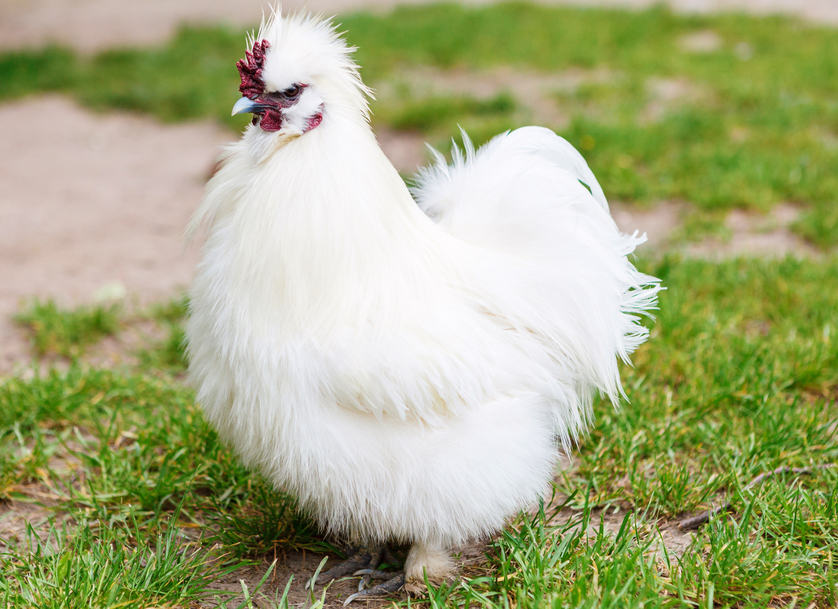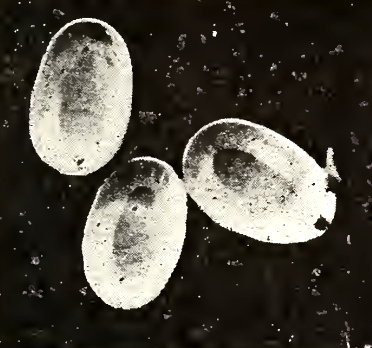Silkie chickens and parasites

Silkies are no more at risk of catching parasites than any other chicken although the soft fluffy feathers, crests and feathery legs makes lice and mites more difficult to see.
Silkie parasites and mites:
A really bad mite infestation can kill a bird, or at least weaken it so that it is susceptible to any illness or infection. Our Silkies are checked at least twice a month for mites, and it is automatic to check for mites every time we handle a Silkie. In my experience, the mites usually start in the Silkie crest.
The biggest pest to our Silkies is Fowl Mites.
The first time I came into contact with this nasty pest was shortly after I bought my first pair of white show Silkies. I was so proud of them and couldn't wait until the first show of the fall. They were housed in roomy, individual wire-bottomed cages in an insulated and very clean building and I was meticulous about making sure that their cages were kept clean.
Below: A fowl mite.

After a month or so, I noticed that the male's crest appeared to be dirty at the base. I checked it and was horrified to find that the base of the feathers were crusted with dark, nasty stuff, however my 40+ year old eyes didn't see the tiny mites travelling all over my Silkie's skull. I put out a help email on a number of poultry sites and was informed that the problem was mites.
A thorough bathing with Adam's Flea and Tick shampoo and a follow-up with Adam's Spray took care of the problem, but it took me at least 3 days to get over the feeling of something crawling on me, and feeling like a bad Silkie mama.
Mites will crawl on you, but cannot live on you, they are species specific, so even though you might get the creeps after handling birds with mites, just wash thoroughly or shower, and you won't have to worry about the mites taking up housekeeping on you!
Five years later, mites are just a fact of Silkie keeping, and I don't overreact anymore. However, I am diligent in checking my birds for these nasty critters.
How do you know if your Silkies have mites or lice?
With mites and lice you can see the adult or the egg cases attached to the base of the feather. To confirm a case of mites or lice, pluck one feather and look at it under a magnifying glass. You an see the movement of the mites or the eggs clearly.
They look like tiny specks of dirt or pepper, and their droppings are dark as well. They are easy to see on a white Silkie and much harder on a black Silkie.
Their mouth parts pierce the skin and they live on blood, that's why a bad infestation can weaken or kill a bird. After the crest, the vent is the most popular place for mites to congregate.
Below: Mite eggs.

They will attack chicks as well as adult Silkies. If you find one bird with mites, check and treat every bird in your flock. Most of the time, you can just spray the affected areas with Adam's spray or Avian Insect Liquidator, just put the nozzle of the spray bottle against the affected area and pull the trigger in short bursts to deliver just a small amount against the skin.
Treating mites and lice on Silkies:
You can treat lice and mites by:
- Regular dusting with Diatomaceous earth. Treat the bird, the nest boxes as well as the coop and add to the dust bath.
- Cleaning the coop and changing the bedding for sand.
- A chemical treatment prescribed by a vet.
- A bath using a mite and lice and flea shampoo.
Follow up in a week to 10 days to make sure that the bird is clean. Bad infestations will require a bathing, Adam's Flea and Tick shampoo is great, and I have also used the Adam's Flea dip as well on adult birds.
The best prevention for mites is to keep your birds in a clean environment and check them frequently.
